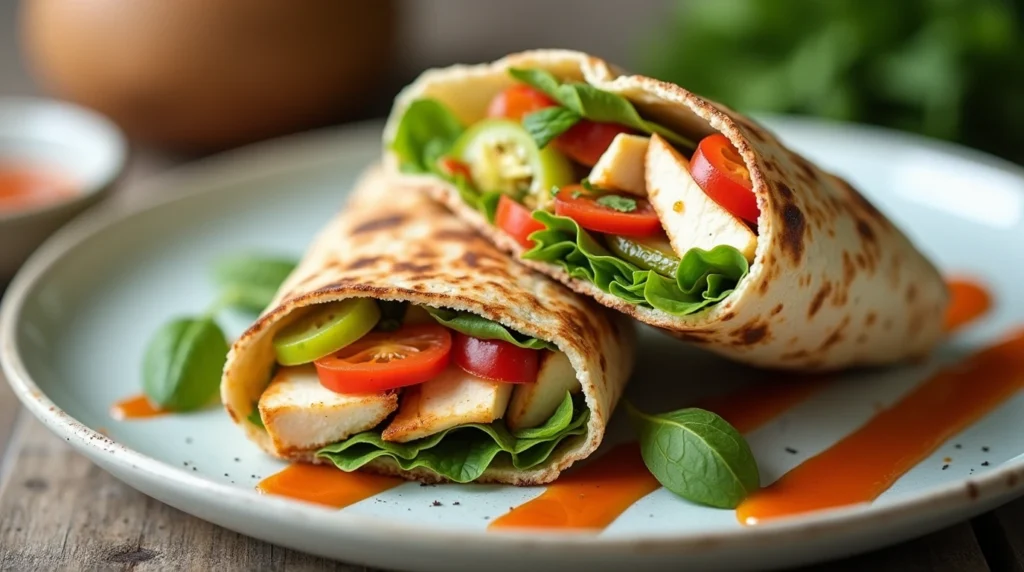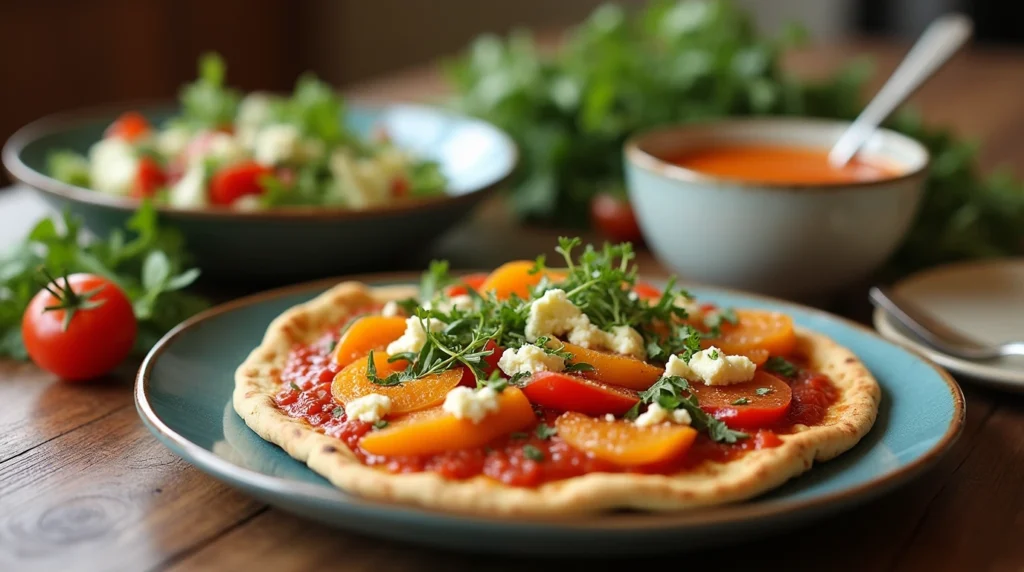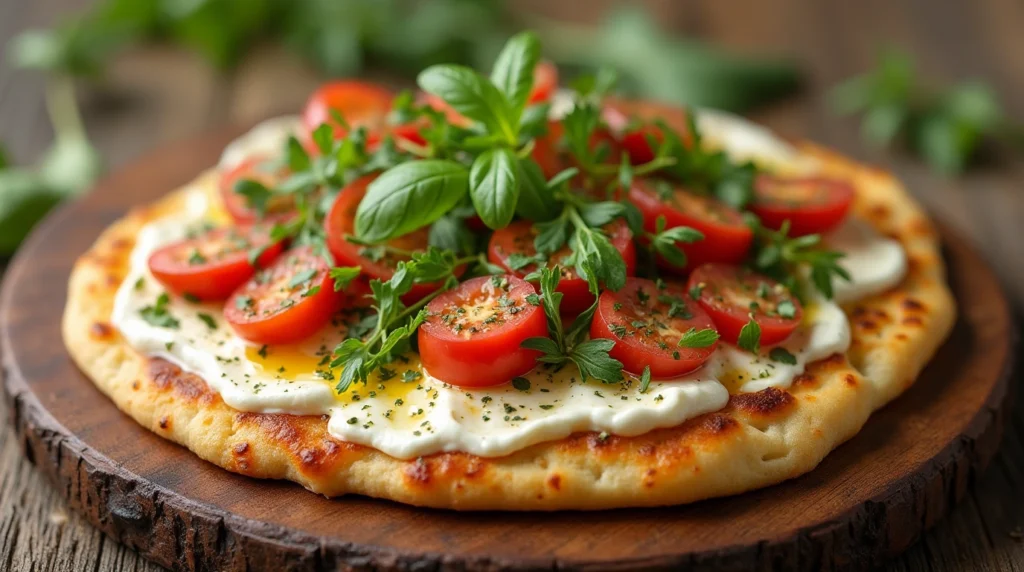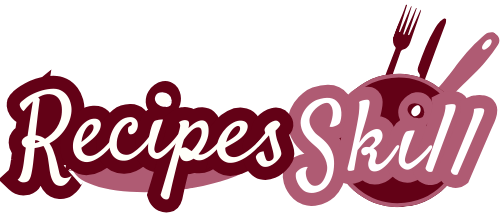Introduction to Cottage Cheese Flatbread
Cottage cheese flatbread is a delightful twist on traditional flatbreads, combining the creamy goodness of cottage cheese with the versatility of a flatbread base. This unique dish not only offers a delicious flavor but also packs a nutritional punch, making it a fantastic option for health-conscious eaters. Whether you’re looking for a quick snack, a healthy meal, or a creative way to use cottage cheese, this article will guide you through everything you need to know about this dish. From its ingredients and preparation to serving suggestions and health benefits, you’ll discover why it deserves a spot in your kitchen.
What is Cottage Cheese Flatbread?
This type of flatbread incorporates cottage cheese into its dough, resulting in a soft, flavorful, and protein-rich alternative to traditional options. Originating from various cultures, flatbreads have been a staple in many cuisines around the world. By adding cottage cheese, this version not only enhances the taste but also boosts the nutritional value, making it a great choice for those seeking healthier options.
Why Choose Cottage Cheese Flatbread?
When it comes to choosing a flatbread, this version stands out for several reasons. First and foremost, it’s packed with protein, thanks to the cottage cheese, which is known for its high protein content and low fat. This makes it an excellent choice for anyone looking to increase their protein intake without adding unnecessary calories. Additionally, compared to traditional flatbreads made with just flour and water, this option offers a richer flavor and a more satisfying texture.
Moreover, it is incredibly versatile. You can enjoy it as a base for various toppings, use it in wraps, or even serve it alongside soups and salads. The possibilities are endless! So, if you’re on the hunt for a nutritious and delicious alternative to regular flatbreads, this recipe is definitely worth a try.
To fully appreciate the diverse world of cottage cheese flatbread, it’s interesting to explore the broader context of flatbreads in general. Flatbreads have a rich history that spans various cultures and cuisines, each contributing unique variations and flavors. For those curious about the origins and different types of flatbreads, you can delve deeper into the topic by checking out the Flatbread History and Variations on Wikipedia. This resource provides a comprehensive overview of how flatbreads have evolved over time and their significance in different culinary traditions.
Recipe: Ingredients and Preparation

Creating your own flatbread is not only simple but also incredibly rewarding. In this section, we’ll explore the essential ingredients you’ll need, provide a step-by-step guide for preparation, and discuss various cooking methods to achieve the perfect result.
Essential Ingredients
To make delicious flatbread, you’ll need a few key ingredients. Here’s a list to get you started:
- Cottage Cheese: The star of the show! Opt for low-fat or full-fat based on your preference.
- Flour: All-purpose flour works well, but you can also use whole wheat flour for a healthier option. If you’re gluten-sensitive, consider using almond flour or a gluten-free blend.
- Egg: This helps bind the ingredients together and adds richness.
- Baking Powder: A leavening agent that gives the flatbread a light texture.
- Salt: Enhances the flavor.
- Optional Add-ins: Fresh herbs (like parsley or chives), garlic powder, or spices (like cumin or paprika) can elevate the flavor profile.
Feel free to experiment with different ingredients to suit your taste. For instance, adding some fresh herbs can give your flatbread a delightful twist!
Step-by-Step Preparation Guide
Now that you have your ingredients ready, let’s dive into the preparation process. Follow these simple steps to create your flatbread:
- Mix the Ingredients: In a large mixing bowl, combine 1 cup of cottage cheese, 1 cup of flour, 1 egg, 1 teaspoon of baking powder, and a pinch of salt. If you’re using any optional add-ins, toss them in now.
- Knead the Dough: Mix the ingredients until they form a dough. If the dough is too sticky, add a little more flour until it reaches a workable consistency. Knead for about 2-3 minutes until it’s smooth.
- Rest the Dough: Cover the dough with a clean kitchen towel and let it rest for about 10-15 minutes. This allows the gluten to relax, making it easier to roll out.
- Roll Out the Dough: On a floured surface, divide the dough into smaller portions. Roll each portion into a circle or oval shape, about 1/4 inch thick.
- Cook the Flatbread: Heat a non-stick skillet over medium heat. Place the rolled-out flatbread in the skillet and cook for about 2-3 minutes on each side, or until golden brown and cooked through. You can also bake them in the oven at 400°F (200°C) for about 10-12 minutes if you prefer.
Cooking Methods
When it comes to cooking your flatbread, you have a couple of options:
- Pan-Frying: This method gives the flatbread a lovely golden crust and a soft interior. It’s quick and easy, making it perfect for a weeknight meal.
- Baking: If you’re looking for a healthier option, baking is the way to go. It requires less oil and can yield a slightly different texture, which some people prefer.
Whichever method you choose, the result will be a delicious, homemade flatbread that you can enjoy in various ways.
Serving Suggestions and Pairings

Now that you’ve mastered the art of making cottage cheese flatbread, it’s time to explore how to serve it and what to pair it with. This versatile dish can be enjoyed in numerous ways, making it a fantastic addition to any meal. Let’s dive into some creative serving suggestions and delicious pairings!
Creative Ways to Serve Flatbread
Cottage cheese flatbread can be a delightful base for a variety of toppings and spreads. Here are some ideas to get your culinary creativity flowing:
- Toppings and Spreads
- Hummus: Spread a generous layer of hummus on your flatbread for a creamy, protein-packed snack. You can also top it with sliced cucumbers, cherry tomatoes, and a sprinkle of paprika for added flavor.
- Avocado: Mash up some ripe avocado and spread it on the flatbread. Add a squeeze of lemon juice, salt, and pepper for a refreshing treat. You can even top it with sliced radishes or a poached egg for a hearty breakfast.
- Greek Yogurt: Use Greek yogurt as a base and top it with fresh herbs, diced cucumbers, and a drizzle of olive oil. This makes for a light and refreshing meal or snack.
- Sautéed Vegetables: Load your flatbread with sautéed bell peppers, onions, and spinach for a colorful and nutritious option. Add some feta cheese for an extra burst of flavor.
- Meal Ideas
- Breakfast: Enjoy flatbread as part of your breakfast by topping it with scrambled eggs and fresh herbs. It’s a great way to start your day with protein and flavor.
- Lunch: Use the flatbread as a wrap for grilled chicken, roasted vegetables, or a fresh salad. It’s a fantastic way to make a filling and nutritious lunch.
- Dinner: Serve flatbread alongside soups or stews. It’s perfect for dipping and adds a delightful texture to your meal.
Pairing Flatbread with Other Dishes
To elevate your dining experience, consider pairing your flatbread with complementary side dishes and beverages. Here are some ideas:
- Complementary Side Dishes
- Salads: A fresh garden salad or a Mediterranean salad with olives, tomatoes, and cucumbers pairs beautifully with flatbread. The crispness of the salad contrasts nicely with the soft texture.
- Soups: Serve your flatbread with a warm bowl of soup, such as tomato basil or lentil soup. The flatbread is perfect for dipping and soaking up all the delicious flavors.
- Beverage Pairings
- Herbal Teas: A refreshing herbal tea, like mint or chamomile, complements the flavors of the flatbread without overpowering it.
- Sparkling Water: For a light and bubbly option, sparkling water with a slice of lemon or lime can be a refreshing choice alongside your meal.
With these serving suggestions and pairings, your cottage cheese flatbread can shine as a versatile dish that fits into any meal of the day.
Health Benefits of Cottage Cheese Flatbread

Cottage cheese flatbread isn’t just a tasty treat; it also comes packed with numerous health benefits. In this section, we’ll break down the nutritional profile of this dish and explore the specific health advantages it offers.
Nutritional Profile
When you whip up a batch of flatbread, you’re not just indulging in a delicious dish; you’re also nourishing your body. Here’s a breakdown of the key nutrients you can expect from a typical serving:
- Calories: Approximately 150-200 calories per flatbread, depending on the ingredients used.
- Protein: Cottage cheese is a fantastic source of protein, providing around 14-20 grams per serving. This makes it an excellent option for those looking to increase their protein intake.
- Carbohydrates: Depending on the type of flour used, flatbread can contain around 20-30 grams of carbohydrates, making it a moderate-carb option.
- Fats: The fat content varies based on the type of cottage cheese and any added ingredients, but it generally remains low, especially if you opt for low-fat options.
- Vitamins and Minerals: Cottage cheese is rich in calcium, phosphorus, and B vitamins, which are essential for bone health, energy production, and overall well-being.
Health Benefits
Now that we’ve covered the nutritional profile, let’s dive into the specific health benefits of cottage cheese flatbread:
- High Protein Content Cottage cheese is renowned for its high protein content, making this flatbread an excellent choice for those looking to build muscle or maintain a healthy weight. Protein helps keep you feeling full longer, reducing the likelihood of snacking on unhealthy options.
- Low in Fat Using low-fat cottage cheese in your flatbread recipe keeps the overall fat content low. This makes it a heart-healthy option, especially for those watching their fat intake.
- Rich in Calcium Cottage cheese is a great source of calcium, which is vital for maintaining strong bones and teeth. Including this flatbread in your diet can help you meet your daily calcium needs, especially if you’re not consuming dairy products regularly.
- Versatile and Customizable One of the best aspects of this flatbread is its versatility. You can easily customize it by adding whole grains, seeds, or herbs, enhancing its nutritional value even further. This adaptability allows you to cater to various dietary preferences, whether you’re gluten-free, vegan, or simply looking for healthier options.
- Supports Digestive Health If you use whole wheat flour or other whole grain alternatives, your flatbread can be a good source of dietary fiber. Fiber is essential for digestive health, helping to keep your gut functioning smoothly and preventing constipation.
Variations of Cottage Cheese Flatbread

Cottage cheese flatbread is a versatile dish that can be adapted to suit various tastes and cultural influences. In this section, we’ll explore regional variations and some creative flavor combinations that you can try at home. Let’s dive into the world of flatbread and discover how different cultures have embraced this delightful dish!
Regional Variations
Cottage cheese flatbread can take on many forms, depending on the region and the ingredients used. Here are a few notable variations from around the world:
- Indian-Style Flatbread (Paneer Paratha) In India, flatbreads are often stuffed with various fillings. A popular variation is the paneer paratha, where the flatbread is filled with spiced cottage cheese (paneer) and then rolled out and cooked on a skillet. This version is typically served with yogurt or pickles, making it a hearty meal.
- Middle Eastern Lavash Lavash is a traditional Middle Eastern flatbread that can be made with cottage cheese for added flavor and nutrition. This thin, soft bread is often used to wrap grilled meats and vegetables, making it a popular choice for wraps and sandwiches.
- Italian Focaccia with Cottage Cheese Focaccia is a thick Italian flatbread that can be enhanced with cottage cheese for a unique twist. By incorporating cottage cheese into the dough, you can create a moist and flavorful focaccia that pairs beautifully with olive oil and herbs.
- Greek Pita Bread Pita bread is another flatbread that can be made with cottage cheese. This variation is soft and pocket-like, perfect for stuffing with fresh vegetables, grilled chicken, or falafel. The addition of cottage cheese adds a creamy texture and boosts the protein content.
Creative Flavor Combinations
Beyond regional variations, you can also experiment with different flavor combinations to make your flatbread truly unique. Here are some ideas to inspire your culinary creativity:
- Herb-Infused Flatbread Add fresh herbs like rosemary, thyme, or basil to your dough for a fragrant and flavorful flatbread. This herb-infused version pairs wonderfully with soups and salads.
- Spicy Flatbread For those who enjoy a kick, mix in some chili flakes or cayenne pepper into the dough. This spicy flatbread can be served with cooling dips like tzatziki or yogurt sauce.
- Sweet Flatbread Why not try a sweet version? Incorporate a bit of honey or maple syrup into the dough, and add cinnamon or nutmeg for flavor. This sweet flatbread can be enjoyed with fresh fruit or yogurt for breakfast or dessert.
- Vegetable-Loaded Flatbread Mix in finely chopped vegetables like spinach, bell peppers, or zucchini into the dough. This not only adds flavor but also boosts the nutritional content, making it a great option for a healthy snack or meal.
With these regional variations and creative flavor combinations, the possibilities for cottage cheese flatbread are endless. You can easily adapt this dish to suit your taste preferences and dietary needs.
For those looking to expand their culinary repertoire, cottage cheese flatbread pairs wonderfully with a variety of dishes. You might enjoy it alongside a hearty cowboy steak or as a wrap for grilled chicken, which you can learn more about in our guide on how to cook chicken like a chef. Additionally, if you’re interested in exploring more about the nutritional benefits of beans, check out our article on are purple beans good to eat?. These links will provide you with delicious ideas and tips to complement your cottage cheese flatbread experience!
FAQs about Cottage Cheese Flatbread
As you explore the world of cottage cheese flatbread, you may have some questions about its preparation, storage, and variations. In this section, we’ll address some common queries and provide helpful tips for both beginners and seasoned cooks. Let’s dive into the frequently asked questions about this delightful dish!
Common Questions
1. How to Store Cottage Cheese Flatbread?
To store leftover flatbread, allow it to cool completely. Then, wrap it tightly in plastic wrap or aluminum foil to prevent it from drying out. You can keep it in the refrigerator for up to 3-4 days. If you want to store it for a longer period, consider freezing the flatbread. Wrap it tightly in plastic wrap and place it in a freezer-safe bag. It can last for up to 2-3 months in the freezer. When you’re ready to enjoy it, simply thaw it in the refrigerator overnight and reheat it in a skillet or oven for the best texture.
2. How Long to Cook Cottage Cheese Flatbread?
Cooking time for flatbread can vary depending on the method you choose. If you’re pan-frying, cook each piece in a preheated non-stick skillet over medium heat for about 2-3 minutes on each side, or until golden brown and cooked through. If you prefer baking, place the flatbreads in a preheated oven at 400°F (200°C) for about 10-12 minutes. Keep an eye on them to ensure they don’t overcook.
3. Can You Freeze Cottage Cheese Flatbread?
Yes, you can freeze flatbread! After allowing it to cool completely, wrap it tightly in plastic wrap and place it in a freezer-safe bag. It can be stored in the freezer for up to 2-3 months. When you’re ready to eat it, thaw it in the refrigerator overnight and reheat it in a skillet or oven for the best results.
4. How Many Calories in Cottage Cheese Flatbread?
The calorie content of flatbread can vary based on the specific ingredients and portion sizes used. On average, a single serving (about one flatbread) contains approximately 150-200 calories. This can change depending on whether you use low-fat or full-fat cottage cheese, the type of flour, and any additional ingredients or toppings you may add.
Tips for Beginners
- Common Mistakes to Avoid
- Overmixing the Dough: When combining your ingredients, be careful not to overmix. This can lead to tough flatbread. Mix just until everything is combined for a tender result.
- Not Letting the Dough Rest: Allowing the dough to rest is crucial for achieving the right texture. Don’t skip this step, as it helps the gluten relax, making it easier to roll out.
- How to Troubleshoot Texture Issues
- Too Sticky?: If your dough is too sticky to handle, gradually add more flour until it reaches a workable consistency.
- Too Dry?: If the dough feels dry and crumbly, add a little water or an extra egg to help bind it together.
By keeping these tips in mind and addressing common questions, you’ll be well on your way to mastering cottage cheese flatbread. This dish is not only delicious but also adaptable, making it a fantastic addition to your culinary repertoire.
Conclusion
Cottage cheese flatbread is a delightful and nutritious addition to any meal, offering a unique twist on traditional flatbreads. Throughout this article, we’ve explored the essential ingredients and preparation methods, creative serving suggestions, health benefits, regional variations, and even answered some frequently asked questions.
By incorporating cottage cheese into your flatbread, you not only enhance the flavor but also boost the nutritional value, making it a smart choice for health-conscious eaters. With its high protein content, low fat, and versatility, this flatbread can easily fit into various diets and meal plans.
Whether you enjoy it as a base for toppings, a wrap for your favorite fillings, or a side to accompany soups and salads, the possibilities are endless. Plus, with the ability to customize flavors and ingredients, you can make this dish your own.
So, why not give cottage cheese flatbread a try? Roll up your sleeves, gather your ingredients, and experiment with different toppings and variations. You might just find a new favorite dish that’s not only delicious but also good for you. Happy cooking!
Print
Cottage Cheese Flatbread: A Delicious and Nutritious Twist
- Total Time: 20 minutes
- Yield: 4 flatbreads 1x
- Diet: Vegetarian
Description
A quick, easy, and protein-packed flatbread perfect as a snack, side dish, or base for your favorite toppings!
Ingredients
- 1 cup cottage cheese (low-fat or full-fat)
- 1 cup all-purpose flour (or whole wheat flour)
- 1 tsp baking powder
- 1/2 tsp salt
- 1/4 tsp garlic powder (optional)
- 1 tbsp olive oil (for cooking)
Instructions
- In a mixing bowl, combine the cottage cheese, flour, baking powder, salt, and garlic powder (if using). Mix until a dough forms.
- Lightly flour a clean surface, and knead the dough for about 2 minutes until smooth.
- Divide the dough into 4 equal portions and roll each into a ball.
- Flatten each ball with a rolling pin to create round flatbreads about 1/4 inch thick.
- Heat a non-stick skillet over medium heat and add a small drizzle of olive oil.
- Cook each flatbread for 2-3 minutes on each side until golden brown and puffed up slightly.
- Serve warm or use as a base for your favorite toppings!
Notes
Add herbs like parsley or chives to the dough for extra flavor.
Store leftovers in an airtight container in the fridge for up to 3 days.
- Prep Time: 10
- Cook Time: 10
- Category: Bread
- Method: Stovetop
- Cuisine: Fusion
Nutrition
- Serving Size: 1 flatbread (out of 4)
- Calories: 150 kcal
- Sugar: 1 g
- Sodium: 210 mg
- Fat: 4.5 g
- Saturated Fat: 1 g
- Unsaturated Fat: 3 g
- Trans Fat: 0 g
- Carbohydrates: 18 g
- Fiber: 1 g
- Protein: 7 g
- Cholesterol: 10 mg
